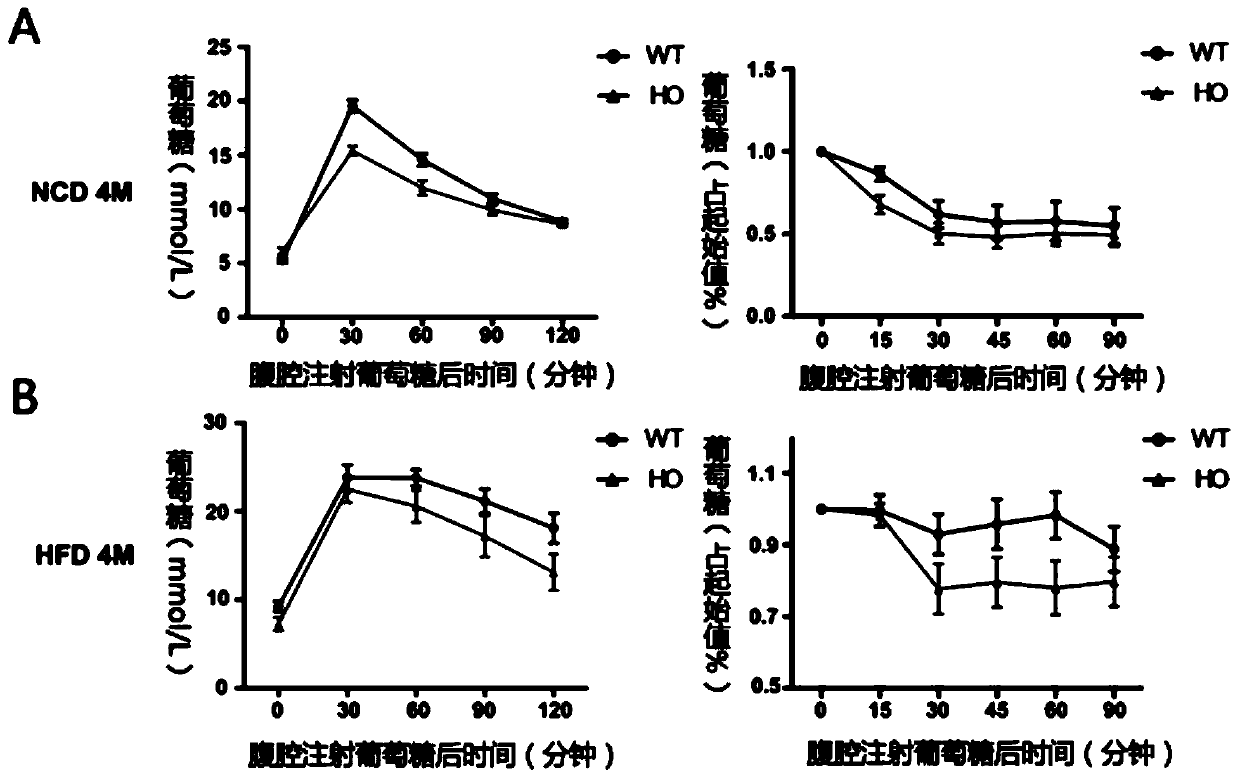Application of ASB3 in preparation of drugs for treatment of non-alcoholic fatty liver disease
A fatty liver disease, non-alcoholic technology, applied in the field of gene function, can solve the problem of less function of ASB3 gene, and achieve the effect of reducing fat accumulation, less side effects, and inhibiting content
- Summary
- Abstract
- Description
- Claims
- Application Information
AI Technical Summary
Problems solved by technology
Method used
Image
Examples
Embodiment 1
[0043] 1. Experimental method
[0044] 1. Tissue protein extraction:
[0045] The fresh tissue is taken and frozen at -80 degrees Celsius. Before extracting tissue protein, melt the powerful lysate and add PMSF. Weigh the tissue block, add 500ul of strong lysis solution for every 50 mg of tissue, and add 1ml of strong lysis solution for every 300 mg of adipose tissue. Add 2-3 small steel balls and oscillate on the tissue grinder at a frequency of 60 Hz for 120 seconds. After shaking, centrifuge at 14000g at 4°C for 5 minutes. The supernatant is taken as the tissue protein extract. According to the BCA quantification process, tissue protein quantification was performed.
[0046] 2. Oil red O staining: tissue & cells:
[0047] Tissue Oil Red O staining: Fresh tissues were taken and embedded in oct, and immediately frozen in liquid nitrogen. The frozen tissue was sliced in a pre-cooled cryostat, cut into 12um thickness and immediately adhered to the anti-removal glass slide, and ...
PUM
 Login to View More
Login to View More Abstract
Description
Claims
Application Information
 Login to View More
Login to View More - R&D
- Intellectual Property
- Life Sciences
- Materials
- Tech Scout
- Unparalleled Data Quality
- Higher Quality Content
- 60% Fewer Hallucinations
Browse by: Latest US Patents, China's latest patents, Technical Efficacy Thesaurus, Application Domain, Technology Topic, Popular Technical Reports.
© 2025 PatSnap. All rights reserved.Legal|Privacy policy|Modern Slavery Act Transparency Statement|Sitemap|About US| Contact US: help@patsnap.com



